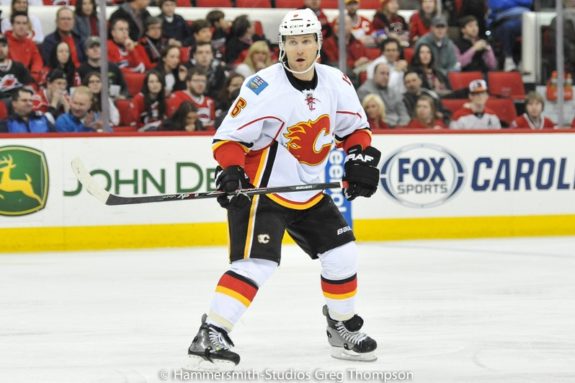The NHL is a physical league, but last year’s Stanley Cup Final showed that size doesn’t necessarily matter.
The Chicago Blackhawks and the Tampa Bay Lightning were both teams that based their roster around speed and skill. They beat out two heavier teams in the Anaheim Ducks and New York Rangers, proving that having a physically dominant team doesn’t necessarily equal franchise success.
From a Canucks point of view however, they can look right within their division and see that size is a factor, especially on defence. The Los Angeles Kings have the biggest defence in the Pacific division, and their physically dominant defence allows them to win more puck battles in their own zone and move the puck out with ease. It’s no secret that their big defence helps them control possession.

Here’s where the Kings team Corsi % has ranked at season’s end:
2011-12: 2nd (54.7%)
2012-13: 1st (56.3%)
2013-14: 1st (56.8%)
2014-15: 1st (55.4%)
This season: 2nd (56.6%)
Of course it helps to have a superstar puck mover in Drew Doughty playing on your defence, but this Kings back end is big and physical, helping them retrieve the puck easier and limiting scoring chances in their own end. The average size of a Kings defenceman this season is 6’3, 215 pounds.
Pacific Division Defence
As Tampa and Chicago showed, size on the back end doesn’t necessarily equal success, but for a Canucks team playing in a physical Pacific division, having a small defence hurts their chances. The Kings size on the back end gives them an advantage at retrieving the puck.
Compared to the Pacific division, the Canucks have an undersized defence. Five of the seven Pacific division teams have a defence weighing in at over 205 pounds. Only the Canucks and the Flames have an defence weighing under 200 pounds on average. There are signs that their smaller defence isn’t as effective at moving the puck of of their own zone. They have sixth-worst team Corsi % in the league at 47.9%.
Out of all defencemen in the Pacific division, the Canucks have four defenceman in the bottom ten for hits received. Sbisa, Tanev and Edler have all been hit 18 times, while rookie Ben Hutton has been hit 16 times. Tanev has the worst hit differential of all Pacific division defencemen at -17.
Surely it would be naive to think this all has to do with size. Although Chris Tanev has one of the worst hit ratios in the NHL, he is one of the most underrated puck movers in the game. Him and Alex Edler have formed a legitimate top pairing for the Canucks. They both have the best Corsi ratings on the Canucks defence. Rookie Ben Hutton has also impressed with a Corsi rating of 51.3%, along with an ability to put the puck on a string with his stretch passes.
Even with their success the Canucks remain a mediocre possession team, and the depth of their defence has been exposed over the first few games of the season. While the Canucks have a legitimate top defensive pairing, their bottom four haven’t quite had the same consistency. Puck moving is more important than size, but it’s a problem when your defence are taking hits and losing possession.
The Flames Defence
The only defence smaller than the Canucks in the Pacific division is the Calgary Flames defence. Their back end might throw the whole concept of size making a difference into question, since their defence was considered one of the best in the league.
Or is it really all that talented? They did make it to the second round of the playoffs last season, but they had the worst team Corsi % of all 16 playoff teams at 45%. None of their top defencemen had a positive Corsi in either the regular season or the playoffs. As we saw against the Canucks in the playoffs, they were able to keep pucks out of the net by collapsing around the goalie and blocking a bunch of shots.

Their negative possession statistics were masked by their offensive outburst on the back end. Dennis Wideman set a career high with 56 points last season, Mark Giordano could have led all defencemen in scoring if it weren’t for a torn bicep. Tj Brodie and Kris Russell also set career highs in points.
Now that the points aren’t coming in bunches from their back end, their defensive flaws are more noticeable. The injury to Brodie and the slow start by Dougie Hamilton are other reasons why the Flames defence has given up a league-high 41 goals thus far.
The Canucks are off to a better start than Calgary, but looks a little vulnerable past the top pairing. Having a large defence might not be necessary, but the Kings sizable back end is still the best in the Pacific division.